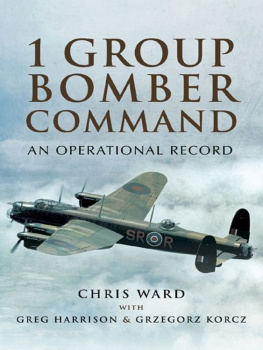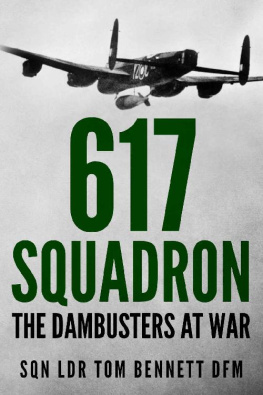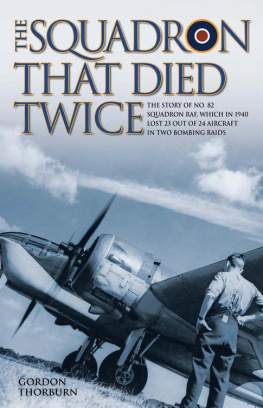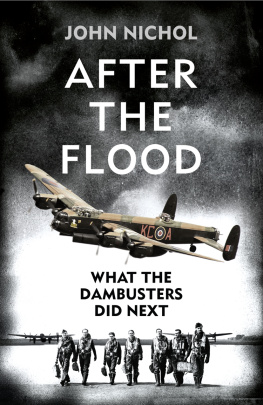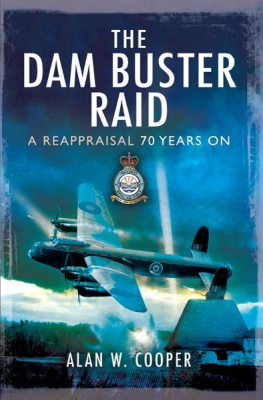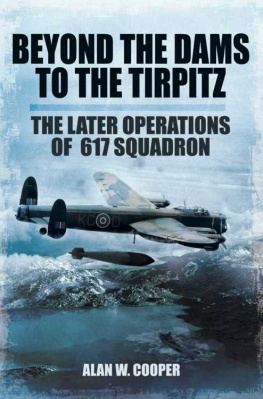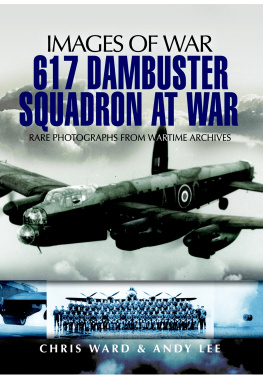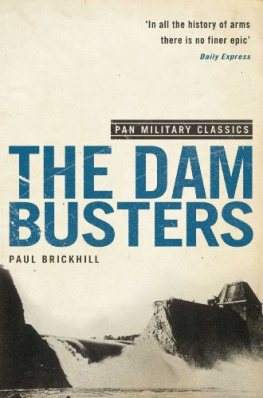Dambuster Raid Crash Sites
617 Squadron in Holland and Germany
Chris Ward
Andreas Wachtel
First published in Great Britain in 2007 by
Pen & Sword Aviation
an imprint of
Pen & Sword Books Ltd
Copyright Chris Ward, 2007
9781783035250
The right of Chris Ward to be identified as Author of this Work has been
asserted by him in accordance with the Copyright,
Designs and Patents Act 1988.
A CIP catalogue record for this book is
available from the British Library
All rights reserved. No part of this book may be reproduced or transmitted in
any form or by any means, electronic or mechanical including photocopying,
recording or by any information storage and retrieval system, without
permission from the Publisher in writing.
Typeset in Palatino by
Phoenix Typesetting, Auldgirth, Dumfriesshire
Printed and bound in England by
CPI UK
Pen & Sword Books Ltd incorporates the Imprints of Pen & Sword Aviation,
Pen & Sword Maritime, Pen & Sword Military, Wharncliffe Local History,
Pen & Sword Select, Pen & Sword Military Classics and Leo Cooper.
For a complete list of Pen & Sword titles please contact
PEN & SWORD BOOKS LIMITED
47 Church Street, Barnsley, South Yorkshire, S70 2AS, England
E-mail: enquiries@pen-and-sword.co.uk
Website: www.pen-and-sword.co.uk
Introduction
There can be little doubt that the bombing operation carried out against four of Germanys dams in May 1943 became the most celebrated feat of arms in aviation history. At the time it captured the imagination of the free world, and provided a boost to the morale of the war-weary British, in whose favour the tide had only recently begun to turn after years of bad news. Since the war, Operation Chastise has continued to captivate generations of people around the world, and the hunger for knowledge does not abate. Enthusiasts for the subject demand detail. It is not enough for them to know that eight of the specially modified Lancasters failed to return. They want to understand the circumstances behind the losses, and I strove to provide answers to their questions in my book, Dambusters , published by Red Kite in 2003. There are those, though, who are not content to simply read about history, but desire also to experience it for themselves as far as it is possible so long after the event. For them it is necessary actually to see the places connected with this story of courage and determination, to soak up the atmosphere and to pay their respects in person. The dams, the crash sites and the cemeteries all possess their own aura, and act as a magnet to draw people on a journey of discovery. I know from personal experience what it is to stand on the Mhne and Eder Dams for the very first time, after reading and rereading the accounts in a multitude of books since childhood. I was seven years old when I first learned of the Dambusters, and almost forty when I caught my first excited glimpse of the Mhne through a coach window. My heart was thumping at the fulfilment of a life-long ambition, but I had to wait another half-hour before I could actually set foot on the dam, as the driver had missed the coach park entrance and had to detour around the lake. I remember the frustration welling up inside me as we wasted those precious minutes crossing the Delecke and Krbacher bridges to bring us back to our starting point. It was all forgotten, of course, as I stood on the centre of the dam, oblivious to all the other tourists and promenaders about me. As I faced the Heversberg, the spit of land a mile away across the smooth waters of the lake from where the bombing runs began, I was totally engrossed in recalling to mind the tense narrative of Paul Brickhills account of the attacks that took place in the earliest hours of Monday 17 May 1943. I can still recall the power of my emotions on that day, and each time I have visited a new location while researching the squadrons history, that sense of excitement, of capturing a piece of history, has returned. It is a pilgrimage by the faithful to honour fallen heroes, whose names have become so familiar over the years. To borrow the immortal words of Abraham Lincoln, spoken at Gettysburg, Pennsylvania, in November 1863, it is altogether fitting and proper that we should do this.
It is assumed that readers of this book intend to use it as a guide to visit the places documented, and are already broadly familiar with the events of Operation Chastise and the attack on the Dortmund-Ems Canal. For this reason I have not included an account of each operation, but rather outlined the involvement of each of the crews who failed to return, and the circumstances of their demise. The Dams cost the squadron eight out of nineteen crews, or 42 per cent of those dispatched, while the Dortmund-Ems Canal cost five out of eight, and if one includes the loss of S/L Maltby on the previous night when the Lancasters were recalled while outbound for the canal, the casualty figure becomes six out of nine, or 66 per cent of those dispatched. A number of founder crews, including survivors of the Dams raid, were present on this operation, and were among those failing to return. The two operations have been combined in this book because they are similar in a number of respects, and took place in roughly the same geographic region of Germany and Holland, making them easily within reach of each other. Both were attacks on aquatic-related targets, both were conducted at very low level, and together they represent the fortunes of 617 Squadron in 1943 before the Cheshire era. Those killed are mostly buried in the Commonwealth War Graves Commission cemeteries at Reichswald and Rheinberg in Germany, and Bergen-op-Zoom in Holland, while others lie in local cemeteries in Holland.
As always, I am indebted to my friend Andreas Wachtel. Without his unselfish hard work and commitment to keeping alive the memory of the courageous young men depicted in this book, and Dambusters , both publications would have been much the poorer.
Finally, may I add for the benefit of those who wonder about their reception by our former enemies in Germany, that in my frequent visits to the country to carry out research, I have encountered only friendliness, courtesy and a willingness to help. The German people seem less aware of the Second World War, or are, at least, less willing to hold on to the memory of it, but in no way, in my experience at least, harbour any resentment towards the British. It was an intensely painful period in Germanys history, and they are content to let it go. It is for the victors to remember, but to do so in a respectful way, particularly as guests in their country.
Chris Ward
Lutterworth.
December 2006
Roll of Honour
THOSE WHO LOST THEIR LIVES DURING OPERATION CHASTISE AND ON THE DORTMUND-EMS CANAL
Key
(C) RCAF
(A) RAAF
(NZ) RNZAF
* Bar
MID Mentioned in Dispatches
Operation Chastise 16/17 May 1943
| Lancaster ED934 AJ-K |
| Pilot | P/O V.W. Byers (C) |
| Flight engineer | Sgt A.J. Taylor |
| Navigator | P/O J.H. Warner |
| Wireless operator | Sgt J. Wilkinson |
| Bomb-aimer | Sgt A.N. Whitaker |
| Front gunner | Sgt J. McA. Jarvie |
| Rear gunner | Sgt J. McDowell (C) |
| Lancaster ED864 AJ-B |
| Pilot | F/L W. Astell DFC |
| Flight engineer | Sgt J. Kinnear |
| Navigator | P/O F.A. Wile (C) |
| Wireless operator | Sgt A. Garshowitz (C) |
| Bomb-aimer | F/O D. Hopkinson |


